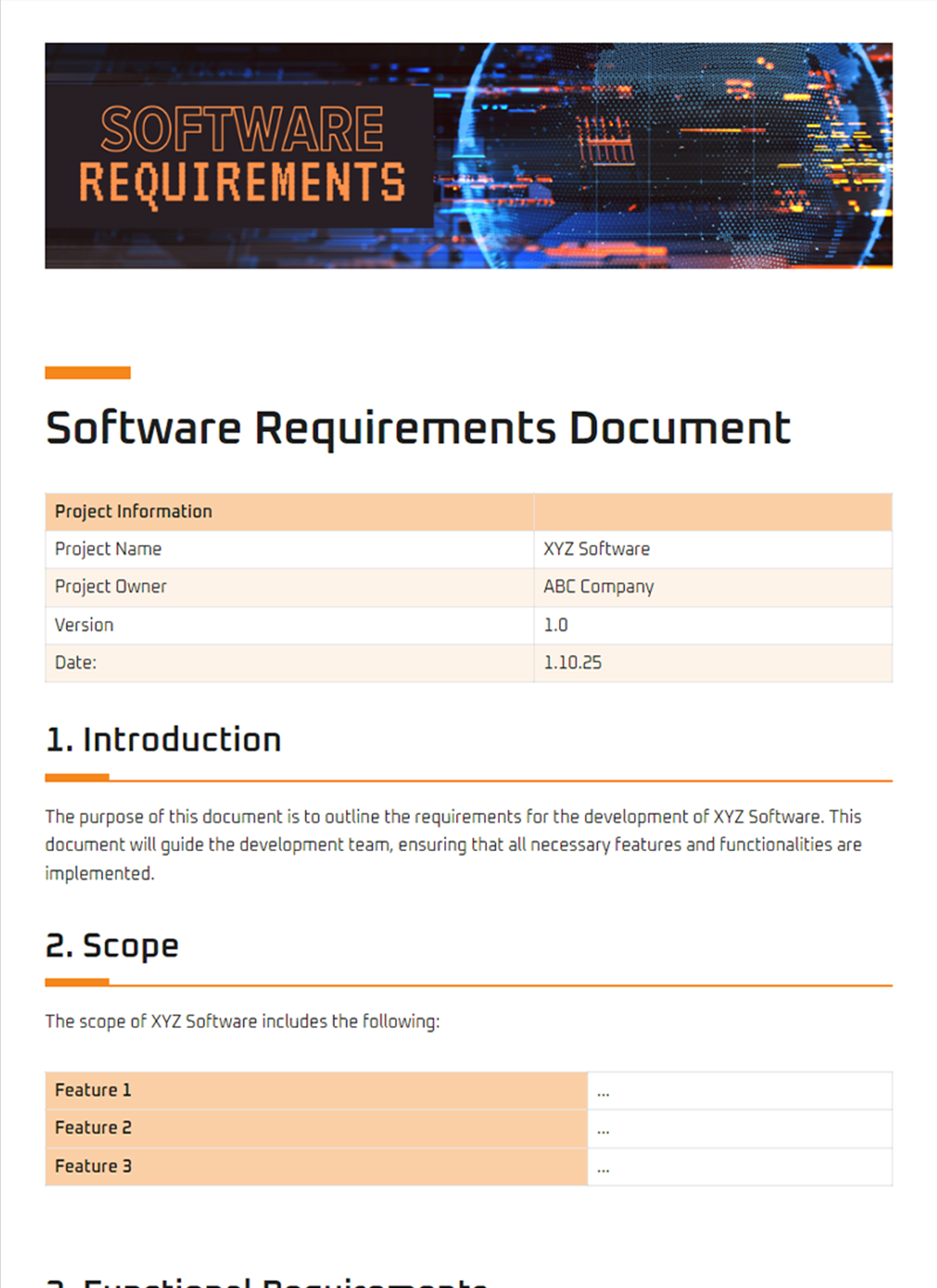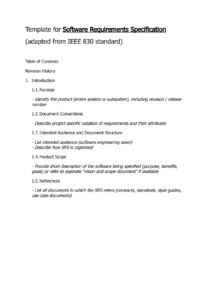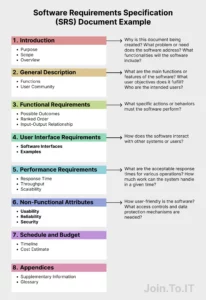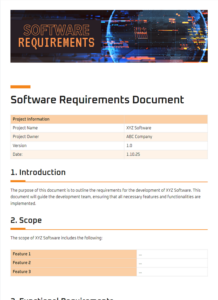A template software requirement specification (SRS) is a document that outlines the functional and non-functional requirements of a software system. It is used to communicate the needs of the stakeholders to the development team and to ensure that the software system meets the needs of the users. An SRS can be used for a variety of software development projects, from small to large, and can be tailored to the specific needs of the project.
There are many different ways to write an SRS, but most SRSs include the following sections: introduction, scope, functional requirements, non-functional requirements, glossary, and appendices. The introduction provides an overview of the SRS and its purpose. The scope defines the boundaries of the SRS and identifies the stakeholders who will be using it. The functional requirements describe the specific functions that the software system must perform. The non-functional requirements describe the overall qualities of the software system, such as its performance, reliability, and security. The glossary defines the terms that are used in the SRS. The appendices contain supporting material, such as use cases, diagrams, and prototypes.

Developing a Template Software Requirement Specification
The first step in developing a template SRS is to identify the stakeholders who will be using it. Once the stakeholders have been identified, you can begin to gather their requirements. The best way to gather requirements is to interview the stakeholders and ask them what they need from the software system. Once you have gathered the requirements, you can begin to write the SRS.
When writing the SRS, it is important to be clear, concise, and complete. The SRS should be written in a way that is easy to understand by both technical and non-technical stakeholders. It should also be organized in a logical way that makes it easy to find the information you need.
Once the SRS is complete, you should review it with the stakeholders to ensure that it meets their needs. Once the SRS has been approved by the stakeholders, you can begin to develop the software system.
Benefits of Using a Template Software Requirement Specification
There are many benefits to using a template SRS. First, a template SRS can help you to save time. By using a template, you can avoid having to start from scratch and can focus on customizing the template to meet the specific needs of your project. Second, a template SRS can help you to improve the quality of your SRS. A template SRS has been reviewed and approved by experts, so you can be confident that it is well-written and complete.
Third, a template SRS can help you to communicate more effectively with your stakeholders. A template SRS provides a common language that can be used by both technical and non-technical stakeholders. This can help to reduce misunderstandings and ensure that everyone is on the same page.
Conclusion
A template SRS is a valuable tool that can help you to develop high-quality software systems. By using a template SRS, you can save time, improve the quality of your SRS, and communicate more effectively with your stakeholders.
If you are looking for a template SRS, there are many resources available online. You can find templates from software development companies, government agencies, and academic institutions. Once you have found a template that meets your needs, you can customize it to meet the specific needs of your project.


